7. 2 February 1946
Spike Jones
The Nutcracker Suite
No.2 for 4 weeks
No.1 at the time Vaughn Monroe – On The Moonbeam & Dick Haymes – State Fair
Tracks
The Little Girl’s Dream: Miniature Overture March, Land Of The Sugar Plum Fairy: Dance Of The Sugar Plum Fairy, The Fairy Ball, The Mysterious Room, Back To The Fairy Ball: Russian Dance-Trepak Waltz Of The Flowers-Part 1, End Of The Little Girl’s Dream: Waltz Of The Flowers-Part 2: Granny Speaks: Good Night Sleep Tight
Spike Jones was already known for his parodies of both classical and pop songs and in December 1945, he released the album The Nutcracker Suite with a gaudy cover that resembled a children’s record and indeed, the sub headings on the cover stated, presents for the kiddies and also prominently displayed with apologies to Tchaikovsky. This was a three disc box set of 78s featuring all the music of Tchaikovsky’s Nutcracker Suite, performed in the satirical style of Spike Jones although many passages were taken quite seriously with a harmony group of singers telling the story of the little girl who fell asleep under the Christmas tree and experienced the Nutcracker and the Mouse King, coming to life. Originally written in 1892 as a story and ballet for children, Spike Jones took this concept to the extreme and produced a recording of the music that was faithful to the original, but amusing enough with his usual bangs and whistles and noises to attract the interest of 1940s children and possibly this would have been the first version of the Tchaikovsky classic they had heard. It was released to late for the Christmas market in the USA and didn’t enter the charts until the first week of January 1946, spending nine weeks in the top five with four of those weeks at no.2. On the week of the 9th of February, the top five best selling popular record albums had Vaughn Monroe’s On The Moonbeam at no.1, Cugat’s Rhumba by Xavier Cugat at no.3 and three albums jointly sharing the no.2 position, Glenn Miller, The Polonaise Album and Spike Jones’ Nutcracker Suite.
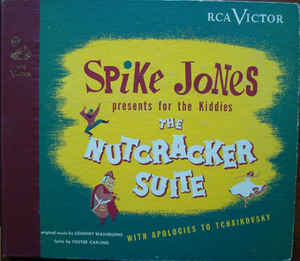
8. 9 February 1946
Al Goodman & His Orchestra (with Earl Wrightson/Rose Ingrham/Mary Martha Briney)
Polonaise
No.2 for 2 weeks
No.1 at the time Vaughn Monroe – On The Moonbeam
Tracks
Polonaise, O Heart Of My Country, Mazurka, Just For Tonight, Now I Know Your Face By Heart, The Next Time I Care I’ll Be Careful, I Wonder As I Wander, Finale
Al Goodman was born in Nikopol, Ukraine, part of the Russian Empire in 1890 and was a conductor, songwriter, stage composer, musical director, arranger and pianist who released his album Polonaise, with songs based on the music of Frédéric Chopin in the same way that Perry Como had achieved enormous chart success with his song Till The End Of Time, also adapted from the melody of Chopin’s Polonaise in A flat major. Al Goodman & His Orchestra recorded eight tracks for the album Polonaise with baritone singer Earl Wrightson and sopranos Rose Inghram and Mary Martha Briney. This was the album corresponding to the Broadway musical Polonaise which ran for 113 performances and was based on the book by Gottfried Reinhardt and Anthony Veiller with music by Frédéric Chopin, adapted by Bronislaw Kaper and lyrics by John LaTouche. It told the true story of the Polish patriot, Thaddeus Kosciusko who was involved in the struggle for Polish independence in 1783 after he had returned to his native Poland following his involvement in the American war of independence. There were eight tracks in total on four 78s, the first track called Polonaise which was an orchestral instrumental of by now a very familiar tune, not only because of the adaptation by Perry Como but also the hit single by Carmen Cavallaro the previous year which spent ten weeks in the no.3 position. The third track was also an instrumental called Mazurka but the other six were all vocal operatic songs using one or all three of the featured singers, Earl Wrightson born in Baltimore, Maryland in 1916, Rose Inghram and Mary Martha Briney from Pittsburgh, Pennsylvania both born in 1918. Although it was a Chopin based themed adaptation, Bronislaw Kaper wrote some original songs for the show in the style of the original Polonaise. The album had two weeks at no.2, both of them shared with other albums, behind Vaughn Monroe’s On The Moonbeam.
9. 9 March 1946
Tommy Dorsey & His Orchestra
Showboat
No.2 for 3 weeks
No.1 at the time Dick Haymes – State Fair & Bing Crosby – The Bells Of St Mary’s
Tracks
Make Believe, I Still Suits Me, Ol Man River, Bill, Can’t Help Lovin’ Dat Man, You Are Love, Why Do I Love You, Nobody Else But Me
Tommy Dorsey was one of the most successful bandleaders of the 1930s with nine number one singles on Your Hit Parade and a further three with his brother Jimmy in the Dorsey Brothers Orchestra. He continued his success into the 1940s with another three official no.1s on the Billboard Retail sales charts and introduced the vocalist Frank Sinatra as his principle singer before he outgrew the big band format and began a solo singing career. Like Paul Whiteman before him, Dorsey was always looking for new trends and refused to remain rooted in the standard pop song format. An opportunity came along for his orchestra to record the songs from the hit show Showboat, composed by Jerome Kern and Oscar Hammerstein II and when the show opened in 1927, it was a radical departure in musical storytelling, depicting the lives of the performers aboard the show boat Cotton Blossom with its serious themes of racial prejudice and even a central storyline of miscegenation. Showboat ran for over five hundred performances on Broadway and was made into a film in 1936. Interest in Showboat was also revived in 1946 with the film Till The Clouds Roll By, a fictionalized biopic of composer Jerome Kern which included a fifteen minute segment of a medley of six of the songs from the show. Tommy Dorsey & His Orchestra recorded the album Showboat featuring eight outstanding hits from the show and it spent three weeks at no.2. The principle male vocalist on this recording was Stuart Foster who sang five of the songs including Make Believe and Ol Man River and the principle female vocalist was Peggy Mann who sang two songs, Bill and Can’t Help Lovin Dat Man. Tommy Dorsey also used the chorus of The Sentimentalists who had sung on several of his recent hits. On the week of the 9th of March, he had two albums inside the top five, Showboat at no.2 and a various artists swing album called Up Swing at no.5 which featured the orchestras of Dorsey as well as Benny Goodman, Artie Shaw and Glenn Miller, each performing two songs on one of the four 78s in the box set, Dorsey’s contributions being Song Of India and Yes Indeed.
10. 6 April 1946
Bing Crosby
Don’t Fence Me In
No.2 for 6 weeks
No.1 at the time Frank Sinatra – The Voice Of Frank Sinatra
Tracks
Don’t Fence Me In, Pistol Packing Mama, New San Antonio Rose, It Makes No Difference Now, Be Honest With Me, Goodbye Little Darlin’ Goodbye, You Are My Sunshine, Ridin’ Down The Canyon When The Desert Sun Goes Down, I’m Thinking Tonight Of My Blue Eyes, I Only Want A Buddy Not A Sweetheart, Walking The Floor Over You, Nobody’s Darlin’ But Mine
Bing Crosby’s previous album The Bells Of St Mary’s only contained two 78rpm discs with four songs and at the other end of the spectrum, Don’t Fence Me In was a six record set with twelve songs, all with the theme of Songs of the wide open spaces with the record cover continuing the theme with Crosby dressed as a cowboy, complete with hat, neck scarf and gloves. The twelve songs all featured Bing Crosby singing but a variety of support artists, The Andrews Sisters with Vic Shoen & His Orchestra on the first two tracks Don’t Fence Me In and Pistol Packing Mama, both of which had already been hit singles, tracks three and four, New San Antonio Rose and It Makes No Difference Now were with Bob Crosby & His Orchestra, tracks five and six, Be Honest With Me and Goodbye Little Darlin’ Goodbye were with the John Scott Trotter Eight, tracks seven and eight, You Are My Sunshine and Ridin’ Down The Canyon When The Desert Sun Goes Down were with Victor Young & His Orchestra and tracks nine and ten, I’m Thinking Tonight Of My Blue Eyes and I Only Want A Buddy Not A Sweetheart were with Woody Herman & His Woodchoppers. Only the songs with the Andrews Sisters were hits in the US but three of the songs, Be Honest With Me, You Are My Sunshine and I’m Thinking Tonight Of My Blue Eyes were all chart toppers in the UK. Most of the twelve songs had different composers, but three each of them were written by Jimmie Davis and Gene Autry.
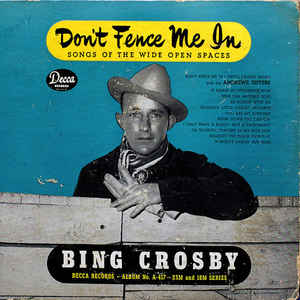
11. 27 July 1946
Ethel Merman
Annie Get Your Gun
No.2 for 5 weeks
No.1 at the time Carmen Cavallaro – Dancing In The Dark & King Cole Trio – The King Cole Trio Vol 2 & David Rose – A Cole Porter Review
Tracks
Doin’ What Comes Natur’lly, Moonshine Lullaby, You Can’t Get A Man With A Gun, I’m An Indian Too, They Say It’s Wonderful, Anything You Can Do, I Got Lost In His Arms, I Got The Sun In The Morning, The Girl That I Marry, My Defenses Are Down, Who Do You Love I Hope, There’s No Business Like Show Business
Ethel Merman was the big star attraction in the Broadway production of Annie Get Your Gun so she received top billing on the album, rather than calling it an original cast recording as they had done with Song Of Norway which didn’t have any major stars. The record cover was specific in describing the album as the sleeve did feature Ethel Merman in the Richard Rodgers & Oscar Hammerstein II production of Annie Get Your Gun, words and music by Irving Berlin, book by Herbert and Dorothy Fields and then finally it stated, with Ray Middleton and members of the original cast and chorus and orchestra under direction of Jay Blackton. Ethel Merman was born Ethel Agnes Zimmermann in Astoria, Queens, New York in 1908 and was the epitome of powerful leading lady singing both on Broadway and in films, but one medium that appeared to elude her was the pop charts, apart from her starring role in this show and the album which peaked at no.2 at the end of July and was still bouncing around, dropping down and back up again to no.2 through to mid-September, behind three different no.1 albums. The other actor to merit a mention on the record cover was Ray Middleton, playing the part of Frank Butler. He was born in Chicago, Illinois in 1907 and Annie Get Your Gun was his first production after leaving the US Army Air Forces during the war. Annie Get Your Gun cast recording was a six disc, twelve song collection with only three songs missing from the album that was in the show, being the chorus number Colonel Buffalo Bill, Frank Butler’s I’m A Bad Bad Man and a duet by Winnie Tate and Tommy Keeler, I’ll Share It All With You. The composer Irving Berlin had packed the show with memorable songs like Anything You Can Do and There’s No Business Like Show Business and even some of the lesser known songs had become hit singles, I Got The Sun In The Morning, Doin’ What Comes Naturally and They Say It’s Wonderful. Four years later, the show would be turned into a film and the soundtrack would become even more successful in the charts. Ethel Merman was a major star of Broadway who was able to transfer her stage presence into the medium of films and she was still starring on Broadway in shows as late as 1970. She died in 1984 aged 76.
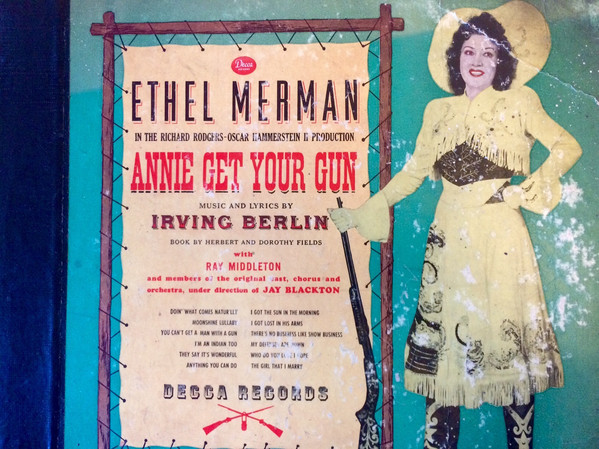
12. 3 August 1946
Three Suns
Twilight Time
No.2 for 1 week
No.1 at the time Carmen Cavallaro – Dancing In The Dark
Tracks
Stardust, Twilight Time, Barcarolle, Girl Of My Dreams, Who’s Sorry Now, Once In A While
The Three Suns were formed in Washington DC by brothers Al and Morty Nevins and their cousin Artie Dunn. Most of their work was instrumental led by the accordion playing of Morty and four of the tracks on their debut album Twilight Time were in this style including the classic Hoagy Carmichael song Stardust, the hit single dating back to the 1920s Who’s Sorry Now and the title track although two of the six tracks were vocal songs, Girl Of My Dreams and Once In A While, both sung by Artie Dunn. Twilight Time had been a hit single peaking at no.8 but only on the Most Played On The Air charts. They were never prolific chart artists, but they would go one better with a no.1 album in a couple of years and they would also place a single at the top, the following year.
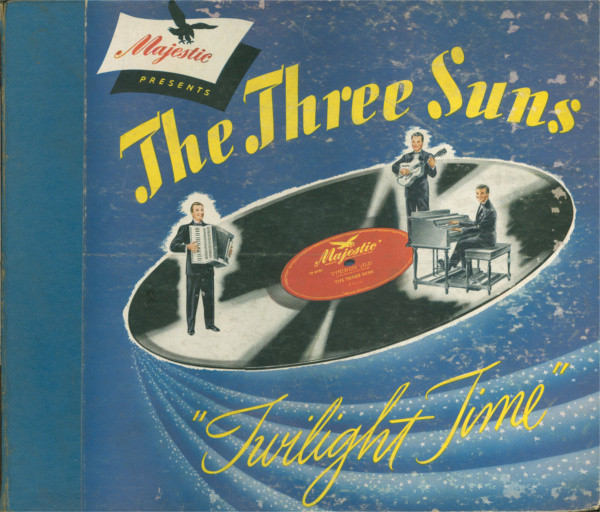
13. 5 October 1946
Wayne King
Plays Irving Berlin Melodies
No.2 for 1 week
No.1 at the time Ink Spots – Ink Spots
Tracks
Always, Blue Skies, All Alone, Say It With Music, Remember, A Pretty Girl Is Like A Melody, What’ll I Do, Alexander’s Ragtime Band
Wayne King, known as The Waltz King enjoyed most of his hits during the 1930s including two number one singles on USA Weekly, Dream A Little Dream Of Me and Goodnight Sweetheart and by the time the Billboard retail sales chart was introduced in 1940, his biggest hit was his various of Maria Elena. Because of the film Blue Skies in 1946 which featured the music of Irving Berlin, there was an upsurge in interest in the songs of the composer who had written his first hit singles in 1910 but his biggest success White Christmas was still current, being re-issued every year and in 1946, like 1945, topping the Airplay singles charts. Wayne King recorded an album of some of Berlin’s songs, many of which were featured in Blue Skies. He used the vocals of Nancy Evans on four of the songs on this album and Earl Randall as his principle male vocalist on a further two songs, the other two tracks being instruments and as they following the theme of being Irving Berlin compositions, not necessarily waltzes which Wayne King was known for. The album plays Irving Belin Melodies only remained in the charts for four weeks and Wayne King would return the following year with a more conventional waltz album.
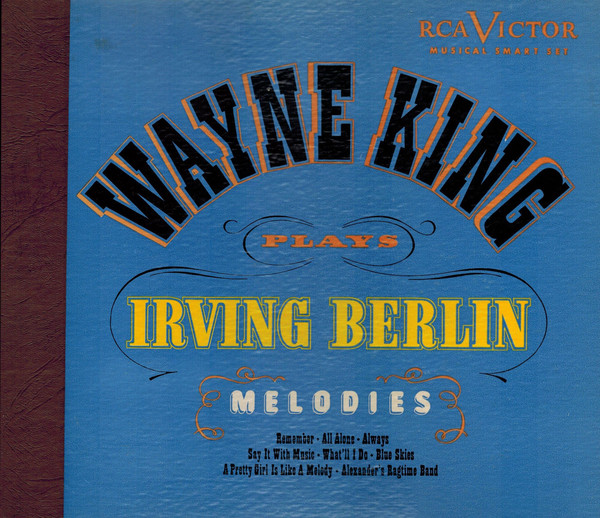
14. 16 November 1946
Bing Crosby & Fred Astaire
Irving Berlin’s Blue Skies
No.2 for 1 week
No.1 at the time Perry Como – Perry Como Sings Merry Christmas Music
Tracks
Bing Crosby – Blue Skies, Bing Crosby & Trudy Erwin – I’ll See You In Cuba, Bing Crosby – You Keep Coming Back Like A Song, Bing Crosby -Running Around In Circles Getting Nowhere, Bing Crosby – A Serenade To An Old-fashioned Girl, Bing Crosby – Everybody Step, Bing Crosby – All By Myself, Bing Crosby – I’ve Got My Captain Working For Me Now, Bing Crosby & Fred Astaire – A Couple Of Song And Dance Men, Fred Astaire – Puttin’ On The Ritz
A little over a month after Wayne King had interpreted the songs of Irving Berlin, the soundtrack to the film Blue Skies hit the charts, and rather than simply call it a film soundtrack, like the cast recording of Annie Get Your Gun, the record company credited the stars of the film, Bing Crosby and Fred Astaire on the label as being the principle performers. Blue Skies the album was a five-disc, ten song compilation on which Crosby sang the first eight songs, although track two was a duet with Trudy Erwin, he duetted with Fred Astaire on the penultimate song A Couple Of Song And Dance Men and Astaire took the solo credit on the final song Puttin’ On The Ritz. One of the songs sung by Crosby, Serenade To An Old-Fashioned Girl was written especially for the film and sung by Joan Caulfield, the female co-star but she didn’t appear on the album. Track three was also written specially for the film, You Keep Coming Back Like A Song In the film as was track four Running Around In Circles Getting Nowhere. There were thirty-two songs all composed by Irving Berlin, some of part of medleys like the Wartime Medley in which Crosby performed excerpts from Any Bonds Today, This Is The Army Mr Jones and White Christmas and on the album, all tracks were backed by John Scott Trotter & His Orchestra.
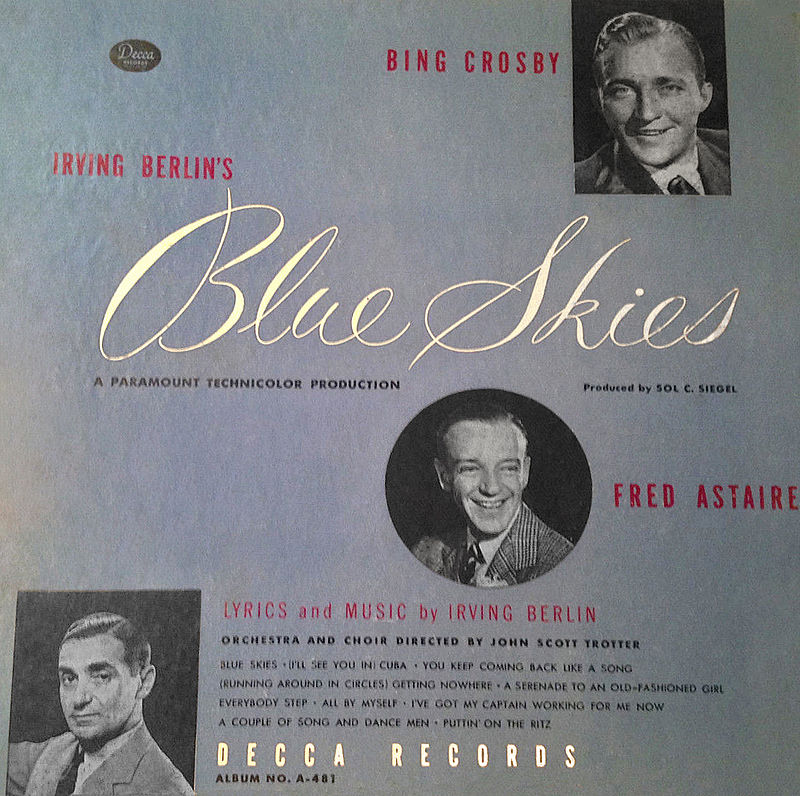

Very great post. I simply stumbled upon your weblog and wished to say that I have got
truly enjoyed surfing around your blog posts. Whatever the case
I will be subscribing for the feed and I am hoping you write again very
soon!
Here is my webpage – kawaii meal planner
LikeLike